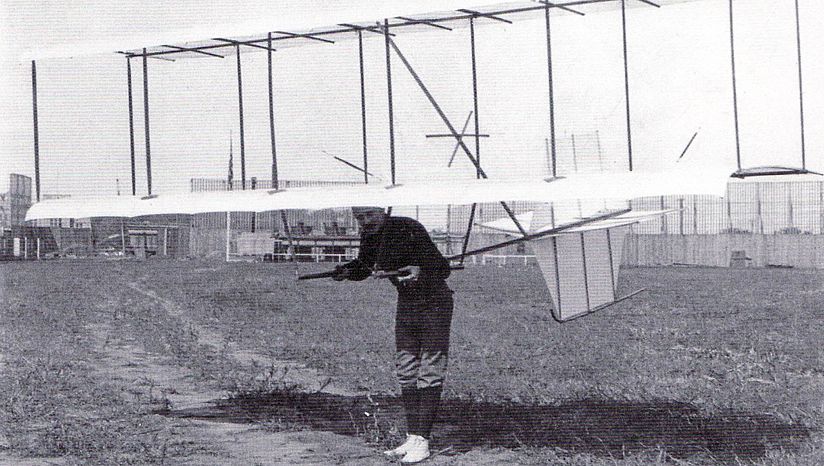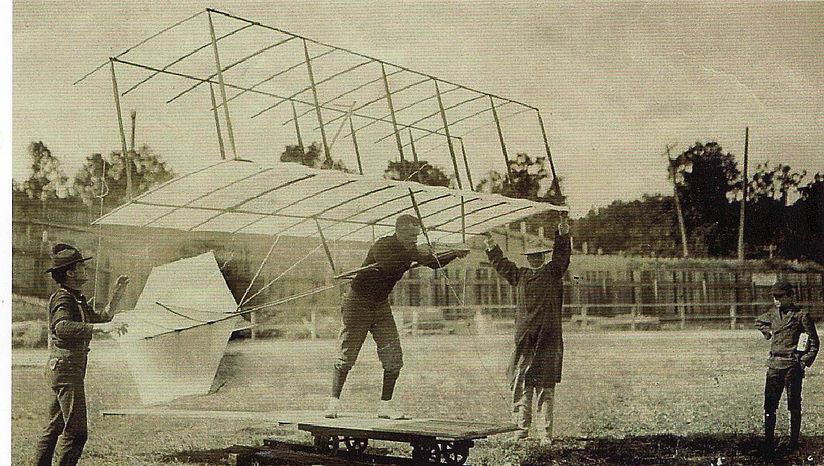The early days of aviation
Chanute glider (Replica)
Octave Chanute (1832-1910) was responsible for the design and construction of flying machines as a box biplane, which dominated aviation technology for several decades.

Photo: William Avery Papers, Wright State University. Dayton OH

The Chanute glider at the World's Fair in St. Louis in 1904. Photo: William Avery Papers, Wright State University. Dayton OH
The box kite design combines high strength, simple construction, small wingspan and good flight stability. It was adopted by the Wright brothers and was one of the foundations of their success.
Chanute, a successful railway engineer, derived the design principle of truss bridges. From 1896 Chanute designed, built and tested gliders of this type with his assistants Augustus Herring and William Avery. At the same time, Chanute systematically collected information about the worldwide development of aviation technology and published it. With the help of his publications, the Wright brothers deepened their knowledge of flight dynamics. There was a lively exchange of letters and visits by Chanute to the brothers' flight experiments. As early as January 1894, Chanute was in correspondence with Otto Lilienthal. Chanute can be considered the decisive link between Lilienthal's insights and the findings of the Wright brothers.
The model for the exhibit was a glider built in 1904 for the World's Fair in St. Louis, which is now housed in the Musée de l'Air et de l'Espace, Paris.
Technical specifications:
- Full-size replica: Carsten Brinkmeier, Weinheim, 2016
- Length: 3.9 m
- Wing span: 4.7 m
- Wing area: 14 m²
- Mass: approx. 20 kg
